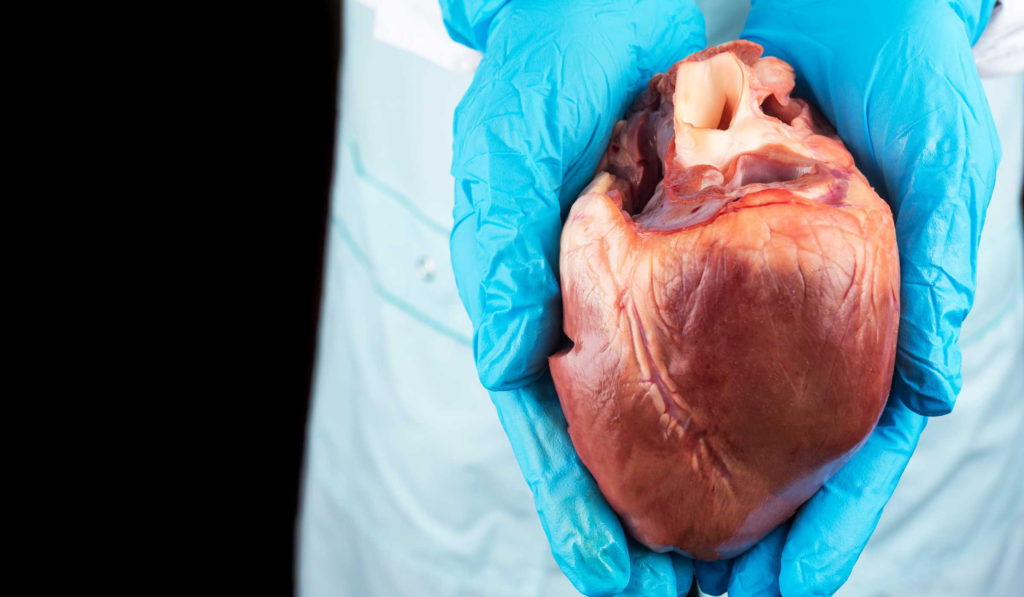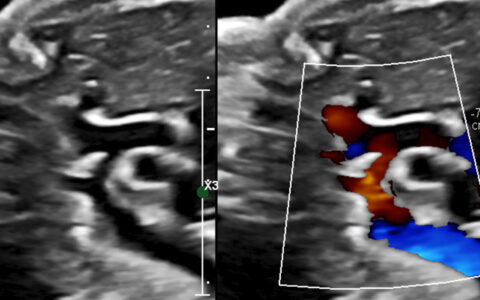With hepatitis C cure rates inching toward 100 percent, and opioid deaths growing in tandem, the number of potential hearts viable for transplant from hep C+ donors is on the rise. Early studies of transplantation using hep C+ hearts have been encouraging, but larger studies and long-term outcomes are needed.
The heart transplant team at Vanderbilt University Medical Center recently reported one-year outcomes from hep C+ heart recipients in the largest single-center cohort to date. The findings were published in JAMA Cardiology.
“Among these patients, survival to one year was not significantly different from that of patients transplanted with hep C– hearts during the same time period,” said Kelly Schlendorf, M.D., medical director of the adult heart transplant program at Vanderbilt Heart and Vascular Institute. “Our findings reinforce the growing consensus among the transplant community that in the area of direct-acting antiviral therapies, hep C+ donors offer a very viable strategy to expand the donor pool. They also potentially reduce waitlist times, morbidity and mortality.”
“Hep C+ donors offer a very viable strategy to expand the donor pool.”
Reaping Good from Tragedy
The Vanderbilt team followed 80 patients receiving hep C+ hearts between September 2016 and April 2019. Participants’ median age was 55 years old; 71 percent were male and 69 percent were white. The one-year survival rate for this cohort was 90.4 percent, and strikingly, the median time to transplant following consent to consider hep C+ donors was only four days, significantly shorter than median wait times nationally.
The findings build on a previous pilot study in which Schlendorf and colleagues measured shorter-term outcomes in 13 hep C+ heart transplant recipients. In that study, direct-acting antiviral therapies proved a viable approach to treating viremia, when necessary, and the researchers concluded using hep C+ donors “represents a potential approach to safely expand the donor pool.”
Uncertainties Remain
Schlendorf says despite the high cure rate of donor-derived hep C infection (dd-HCV), questions remain about potential risks involved. These include the possibility of higher rates of rejection, graft dysfunction or coronary allograft vasculopathy – especially when hep C treatment is delayed.
In the most recent study, all patients who developed dd-HCV and completed treatment demonstrated cure. Compared to patients without dd-HCV, these patients had similar rejection and vasculopathy rates, but higher rates of early severe graft dysfunction.
“Hopefully, with time and technology, we will find ways to treat or inactivate hepatitis C virus prior to the heart being transplanted.”
“It seems unlikely that graft dysfunction immediately post-transplant is related to dd-HCV, but further study is needed to elucidate this association and clarify other uncertainties, including ideal timing of hep C treatment after transplant,” Schlendorf said.
Schlendorf and her team plan to closely follow the patients to see if they continue to enjoy equivalent results to those with hep C– transplants three, five and ten years post-transplant.
Infection concerns may also be mitigated with more research, Schlendorf says. “Hopefully, with time and technology, we will find ways to treat or inactivate hepatitis C virus prior to the heart being transplanted.”




